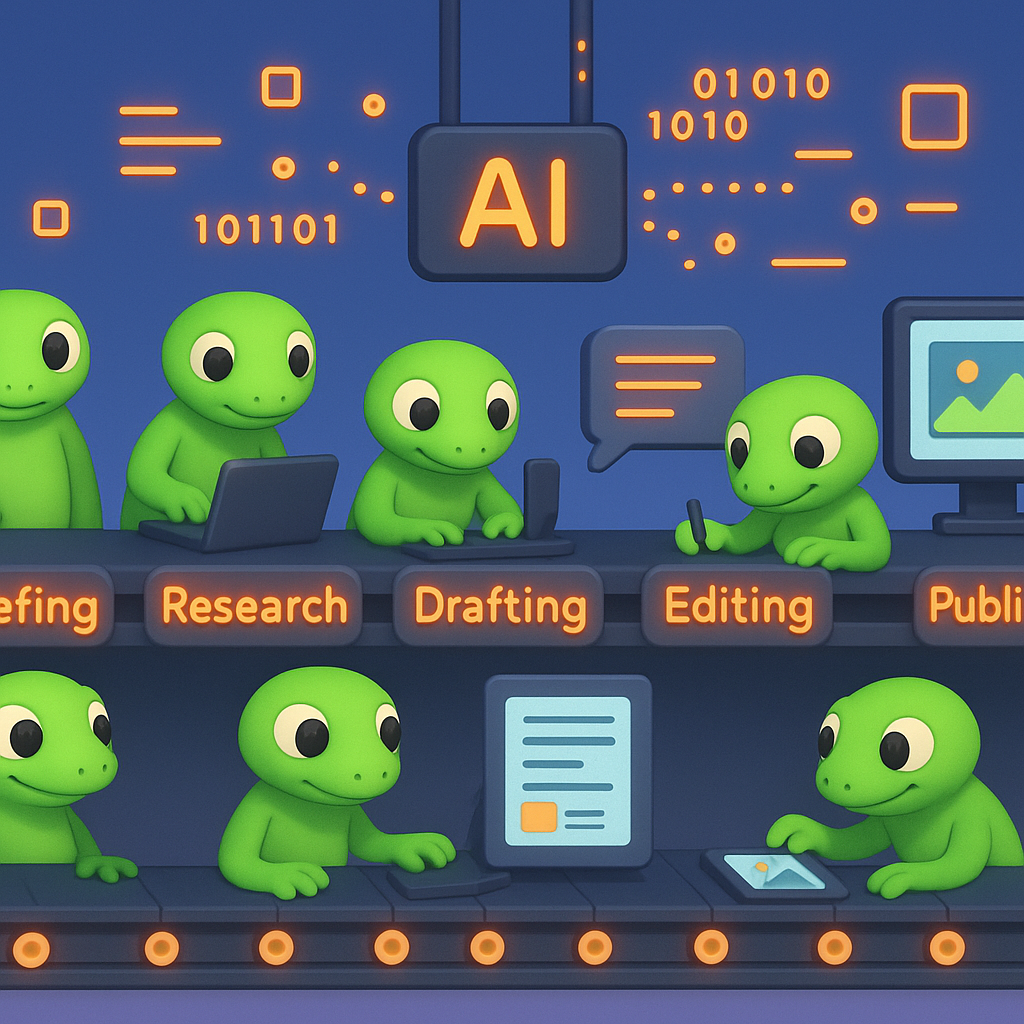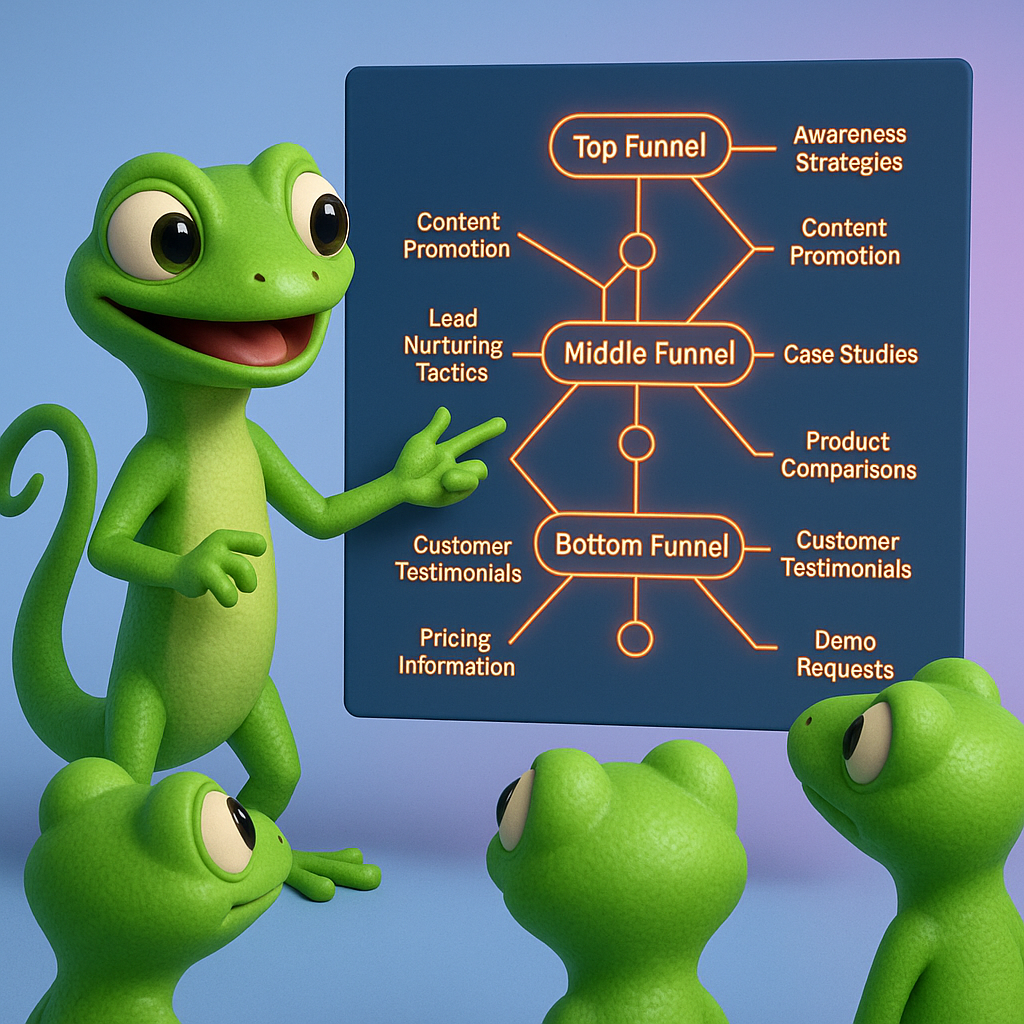Scaling SEO Content Production with AI for Marketing Leaders
The Challenge of Scaling Content in Today’s Market
Marketing leaders face a persistent dilemma: producing enough high-quality SEO content to drive traffic while maintaining brand standards and expertise—all without exploding budgets or timelines. Traditional approaches often force you to choose between quality and quantity, leaving your content strategy either too shallow or too slow to gain traction.
This “quality versus quantity” paradox becomes particularly acute as markets saturate with content. When your competitors publish daily while your team struggles to release weekly articles, the gap in visibility compounds over time—regardless of your content’s superior quality.
At ContentGecko, we’ve engineered a solution that eliminates this compromise by creating a sophisticated AI-powered content pipeline that delivers 10x monthly organic traffic without requiring costly teams or manual processes.
How ContentGecko Scales SEO Content Production
Our AI-powered content creation process combines automation with strategic human oversight to produce content at scale:
1. Multi-Stage Content Pipeline Automation
Unlike basic AI writing tools that simply generate text from prompts, ContentGecko employs a comprehensive 8-stage pipeline:

- Briefing: AI analyzes top-ranking content, search intent, and competitor patterns to create a strategic foundation
- Metadata: Automatic URL slug and synopsis generation for SEO optimization
- Internal Linking: Strategic connection to existing content based on semantic relevance
- Research: Fact-gathering from authoritative sources with both external and internal data mining
- Drafting: AI copywriters create first versions following your style guide and incorporating researched facts
- Editing: AI editors refine and enhance drafts with examples and citations while ensuring alignment with the brief
- Illustration: Visual enhancement with library, stock, or AI-generated images that complement your content
- Publishing: Seamless CMS integration with WordPress, Notion, Webflow and others
This structured process ensures consistency and quality across large content volumes, addressing the primary challenge of scale without sacrificing depth. For example, one e-commerce client automated their product category page creation, transforming a process that previously took 30 minutes per page into a streamlined system that produced 20+ pages daily—each with unique, relevant content.
2. Strategic Content Mapping
Random content creation doesn’t drive sustainable traffic. Our system:
- Automatically clusters keywords into topic hubs using semantic analysis
- Maps articles to appropriate funnel stages (top, middle, bottom)
- Creates a balanced content ecosystem targeting various user intents
- Maintains consistent internal linking structures
Consider how a B2B software company might approach content for “customer relationship management.” Rather than creating isolated articles, our system would automatically organize content into clusters covering implementation guides (bottom funnel), comparison articles (middle funnel), and educational resources about CRM benefits (top funnel)—creating a complete journey that guides prospects through the sales process.

As one marketing director using our platform noted, “The ROI was undeniable after just one month” – precisely because content wasn’t just created but strategically organized.
3. AI-Human Collaboration Framework
While our AI SEO content writer does heavy lifting, we’ve engineered the system to leverage your team’s expertise:
- Your style guide and brand information shape every piece
- Strategic inputs (keywords, target audience) guide research direction
- Optional review stages let you intervene where needed
- You maintain full control while automating repetitive tasks
This approach maintains the E-E-A-T signals Google values while dramatically increasing output speed. As research from SEOProfy confirms, combining AI drafting capabilities with human expertise creates content that satisfies both search engines and readers.
The Quality-Quantity Balance: Practical Approaches
Scaling content without sacrificing quality requires specific strategies:
1. Automated Competitive Gap Analysis
Our system identifies what competitors are missing, then creates content that fills these gaps with expert insights. This approach generates unique value rather than “me-too” content that simply mimics existing material.
For instance, a financial services client discovered that while competitors covered “retirement planning basics,” none addressed the psychological aspects of retirement transition. By identifying and filling this gap, they created unique content that attracted both links and traffic—something generic AI content alone couldn’t achieve.
2. Fact-Based Research Enhancement
Unlike generic AI tools that hallucinate information, our platform conducts comprehensive research using both internal and external sources. This research:
- Gathers factual data from authoritative websites
- Cross-references with your existing content
- Presents findings in structured formats for easy integration
- Automatically cites sources with descriptive anchor text
This approach aligns with Google’s guidelines on AI content, which emphasize factual accuracy and proper sourcing. By using our free keyword clustering tool to organize topics and our research system to gather facts, you create content that’s both comprehensive and accurate.
3. Multi-Layer Editing Process
Our AI editing stage doesn’t just check grammar—it enhances content by:
- Improving flow and readability
- Adding relevant examples and metaphors
- Cross-checking claims against research
- Removing unsupported statements
- Ensuring proper internal and external linking
For example, a healthcare client’s initial AI draft might mention that “regular exercise reduces heart disease risk,” but our editing process would transform this into “According to the American Heart Association, just 150 minutes of moderate exercise weekly can reduce heart disease risk by approximately 30%“—with proper citation and linking to the source.
This process mimics having a skilled editor review every piece without the associated costs or time constraints.
Implementation: Starting Your Content Scaling Journey
Ready to implement AI-powered content scaling in your organization? Here’s how to begin:
1. Audit Your Current Content Performance
Before scaling, understand what’s working:
- Identify top-performing pages and analyze why they succeed
- Spot content gaps
- Assess current production bottlenecks
One media company discovered that their longest, most comprehensive guides consistently outperformed shorter articles—information that directly shaped their AI content parameters and success metrics.
2. Develop Your Content Ecosystem Strategy
Scale requires structure:
- Define topic clusters and funnel stages
- Create a consistent style guide and brand voice documentation
- Establish clear goals for each content type
As NisonCo’s research on 2025 SEO best practices suggests, organizing content into semantic clusters isn’t just good for users—it’s increasingly critical for search visibility as AI becomes more prevalent in search algorithms.
3. Select Specialized AI Tools for Your Workflow
Not all AI is created equal:
- Choose tools with SEO-specific capabilities, not just general AI
- Look for platforms that integrate research and fact-checking
- Prioritize systems with full-pipeline automation over point solutions
Think of content tools as a spectrum: ChatGPT sits at one end (general-purpose, manual), while ContentGecko sits at the other (specialized, automated). The right choice depends on your volume needs and available oversight resources.
4. Implement Progressive Scaling
Start with manageable volumes:
- Begin with 5-10 articles to establish process and quality benchmarks
- Gradually increase production as confidence grows
- Monitor performance metrics to refine approach
This methodology aligns with what leading SEO experts recommend for AI-driven SEO techniques, focusing on strategic implementation rather than blind scaling.
Beyond Traditional SEO: Future-Proofing Your Content Strategy
Modern content scaling must account for emerging search paradigms:
1. Optimize for Multiple Search Environments
As search evolves, your content needs to perform across different contexts:
- Traditional SEO (keyword-focused, link-driven)
- Answer Engine Optimization (direct answers for voice/featured snippets)
- Generative Engine Optimization (content cited by AI systems)
For example, a question like “how to fix a leaky faucet” might appear in traditional search results, voice search responses, and as a citation in ChatGPT answers—each requiring slightly different optimization approaches. Understanding the difference between AEO, GEO, and SEO helps create content that performs across all search environments.
2. Structured Data Implementation
For maximum visibility in AI-driven search:
- Implement schema markup for content types
- Create clear, extractable answer sections
- Format content with consistent header structures
- Balance concise answers with comprehensive depth
Conductor’s research on SEO content predictions emphasizes that structured, well-organized content will gain increasing importance as AI systems seek to extract direct answers from content.
3. Continuous Performance Monitoring
Scaling requires ongoing refinement:
- Track content performance across search channels
- Identify patterns in high-performing pieces
- Adjust templates and processes based on results
- Regularly update existing content to maintain relevance
One e-commerce client discovered that updating older content with fresh statistics and examples produced traffic increases comparable to creating new content—at a fraction of the resource cost.
TL;DR
Scaling SEO content production with AI requires more than just generating text—it demands a sophisticated pipeline that combines automation with strategic human direction. ContentGecko’s approach leverages AI across the entire content lifecycle, from research and drafting to editing and publishing, enabling marketing leaders to produce 10x more content without sacrificing quality or relevance.
By implementing structured workflows, fact-based research, and multi-environment optimization, you can create a sustainable content ecosystem that delivers long-term organic traffic growth without the traditional resource constraints of in-house teams or agencies. The result is a content strategy that scales efficiently while maintaining the expertise signals that both search engines and users value.
